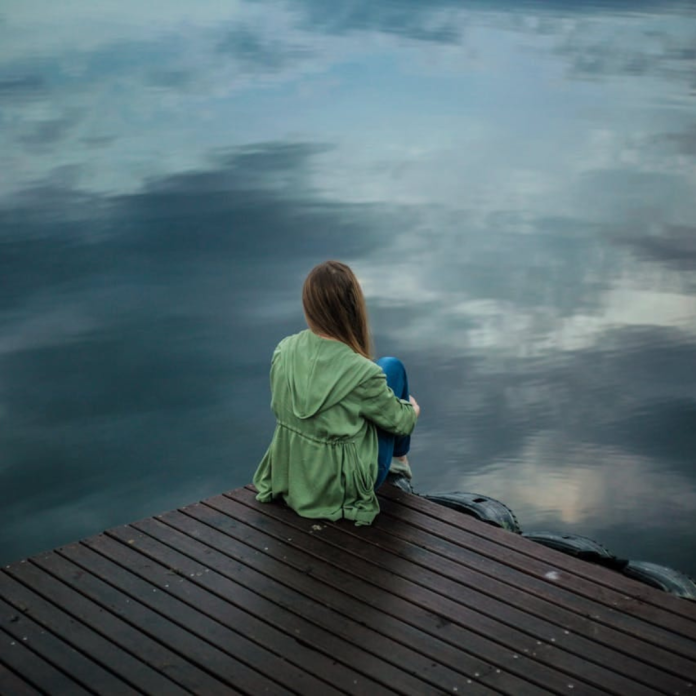In Perfect Days, Wim Wenders’ recent film, we follow a Tokyo toilet cleaner who spends most of his time alone—watering plants, listening to music, reading, and simply existing. While more characters appear later in the story, many viewers found the early scenes especially moving. As BBC critic Nicholas Barber put it, the film is “a meditation on the serenity of an existence stripped to its essentials.” And it resonates—for good reason.
Positive takes on solitude are becoming more popular across media, from books and films to podcasts and even TikTok. It seems we’re entering a cultural moment where being alone isn’t just accepted—it’s celebrated.
A Growing Conversation
In recent years, a number of books have explored the benefits of solitude. Titles like Solitude: The Science and Power of Being Alone, Solo: Building a Remarkable Life of Your Own, and Single: Living a Complete Life on Your Own Terms all hit shelves in 2024. Emma Gannon’s new novel Table For One—a story about a woman who finds fulfillment on her own—adds a fictional, but deeply relatable, voice to this trend.
Later this year, more titles are expected, including The Joy of Solitude and The Joy of Sleeping Alone. An English edition of Daniel Schreiber’s Alone: Reflections on Solitary Living is also on the way. This wave of content challenges the idea that being alone means being lonely.
Redefining Solitude After the Pandemic
The COVID-19 pandemic brought loneliness into sharp focus. US Surgeon General Vivek Murthy even called it a “loneliness epidemic” in 2023. But in the effort to fight loneliness, we may have overlooked the value of chosen solitude.
Psychologist Robert Coplan, author of The Joy of Solitude, believes solitude got a bad name. “We threw the baby out with the bathwater,” he says. Solitude, he explains, is not the same as loneliness. The difference? Choice. Where loneliness is painful and involuntary, solitude can be empowering, intentional, and deeply rewarding.
Journalist Heather Hansen agrees. Co-author of Solitude: The Science and Power of Being Alone, she says many people are now choosing to spend time alone—and thriving because of it.
Rethinking Romance and Relationships
The idea that we need a romantic partner to be happy is being seriously questioned. Emma Gannon, a strong supporter of “slow living,” says the pandemic helped people understand the difference between isolation and chosen solitude. Her novel is part of a larger trend: a re-evaluation of traditional relationships, especially among millennials and Gen Z.
Many young adults are embracing single life with pride. A 2023 U.S. survey found that two in five millennials and Gen Zers view marriage as outdated. In the UK, projections suggest only just over half of Gen Z will ever marry. Social media reflects this shift—viral posts often celebrate the peace and freedom of living alone.
Nicola Slawson, whose book Single stems from her Substack The Single Supplement, notes that more people are choosing to live alone—and finding happiness on their own terms. “There’s a growing rejection of domestic expectations,” she says, especially among women who no longer feel obligated to settle for less.
A Longstanding Fascination
Our cultural interest in solitude isn’t new. Artists have captured its beauty for centuries. From Caspar David Friedrich’s lonely wanderers to Edward Hopper’s urban solitude, being alone has often been seen not as sad, but quietly dignified. As one reviewer noted of Hopper’s work: his paintings don’t feel grim, but rather “proudly self-reliant.”
Daniel Schreiber argues that society has long exaggerated the link between living alone and being lonely. “Romantic love is not the only way to live,” he says. “There are many paths to a fulfilling life.”
Peter McGraw, author of Solo, shares this view. He calls out the “mythology” around relationships—how stories and songs tell us we need a partner to be happy. But data shows otherwise: even if happiness spikes around marriage, it often fades. McGraw also urges people not to treat singlehood as a waiting period, but as a chance to fully live.
Cynthia Zak, author of The Joy of Sleeping Alone, explores a similar theme. She noticed many women prefer having their own space at night and wrote her book to encourage people to honor their personal needs without shame or guilt.
Making the Most of Alone Time
So how do you embrace solitude in a meaningful way? Experts agree on two things: it has to be a choice, and it should be balanced with social connection. As Heather Hansen puts it, solitude is like clay—you shape it into whatever you need.
McGraw suggests avoiding mindless habits and instead using alone time creatively. Go for a walk, visit a museum, journal, or just enjoy music and your senses. Even simple rituals, like a solo bath or cooking a quiet meal, can be powerful moments of self-connection.
Nicola Slawson urges people not to delay joy. “Don’t wait for a partner or for your life to begin. Squeeze joy out of the life you have now,” she says. And when the pressure to conform gets loud? “There’s an alternative script now.”
Emma Gannon adds that solitude is fuel for creativity and self-discovery. She recommends tuning into your senses—what can you feel, hear, taste, and notice when you’re alone?
Zak suggests turning solitude into a ritual. “Ask yourself what you love most about being alone, and cherish that space,” she says.
The Final Word
Solitude isn’t just a break from the noise—it’s a vital part of human happiness. “Humans do need social interaction,” says Robert Coplan. “But we also need solitude.” Finding your balance between the two is the secret to well-being. And that balance will look different for everyone.
By BBC



